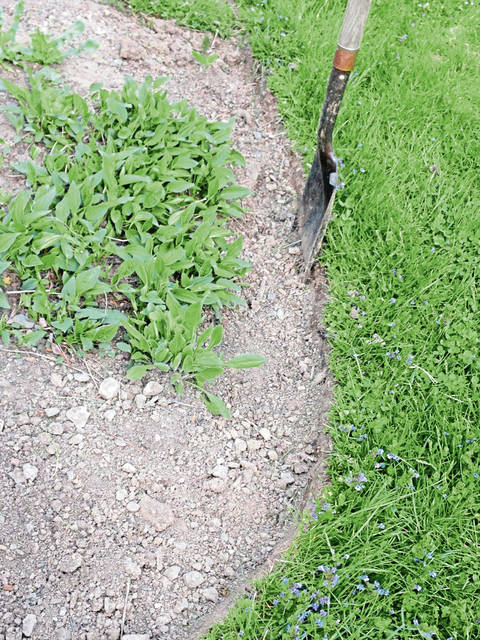Question: We’re putting in a new perennial bed planting in our front yard this spring. When we plant it, should we put fertilizer into each one of the planting holes, or is it better to spread it over the whole bed? How often do we have to re-fertilize the garden? I also plan to put some bulbs there in the fall.
Answer: It was once common practice to put a small amount of fertilizer into the planting hole when planting perennials, but this practice is no longer recommended. This is because some fertilizers can “burn” the newly developing roots. Though this issue isn’t as problematic with natural fertilizers as it is with synthetic ones, I don’t recommend amending individual planting holes with fertilizer, no matter which type of fertilizer you use.
In fact, when it comes to perennials, you may not need to add any fertilizer at all. Regardless of the condition of your existing soil, you’re much better off feeding your plants by amending the soil with a few inches of compost or leaf mold worked into the soil, rather than adding the “fast food” of fertilizer.
The best approach to fertilizing plants is to look at it in terms of feeding the soil, rather than feeding the plants. Adding compost or another type of organic matter to the garden soil before planting serves as a food source for all of the beneficial microbes that live in the soil. It’s really the job of these microbes to digest that organic matter and release nutrients to plants in a form they can readily use. This is how nature feeds plants; through the nutrient cycle. But, since most of us don’t let leaves, dead stems and other debris naturally break down in our gardens to provide that all important organic matter, we need to add it in the form of compost of leaf mold instead.
In subsequent years, add an inch or two of compost, shredded leaves, or leaf mold as a mulch to the top of the bed every spring, and your plants (and soil microbes) will have all the nutrients they need to fuel a year’s worth of growth.
Another point worth making is that many perennials respond to additions of fertilizer by putting out a lot of lush, tender foliage. Though that lush, tender foliage looks lovely and green to us, it’s also a welcome mat to many different pests. It’s easy to over-fertilize plants, and doing so encourages leaf-munching or sap-sucking pests.
In both vegetable and flower beds, aside from adding organic matter regularly, it’s more important to test your soil’s pH than to automatically add fertilizer. The pH of the soil influences the movement and availability of almost all plant nutrients found in the soil. At pHs that are too low or too high, plants can’t pull certain nutrients from the soil, even if they’re there in adequate amounts.
The target pH for most veggies and flowers is 6.5. Since here in Western Pennsylvania we typically have soils that are more acidic than that, gardeners should plan to test their soil every three or four years, and add lime to correct the soil pH. Exactly how much lime to add depends on how far off the mark you are with your current pH. Get a soil test from your county’s office of the Penn State Extension Service and follow the recommendations on the results.
All the being said, I know that there are certainly gardeners who don’t have the ability or budget to purchase and spread an inch of compost over their garden beds each season. If you find yourself in this category, a yearly spring addition of an organic, granular fertilizer is a decent substitute.
Use a natural fertilizer rather than one made from synthetic chemicals to reduce your chances of foliage or root burn and to keep synthetic chemicals out of the environment. Most natural fertilizers are lower in salts, and the nutrients they contain are naturally released over a longer period of time due to the digestive action of those all-important soil microbes.
There are plenty of organic choices at most local garden centers these days, and the selection is broadening each season. When choosing an organic, granular fertilizer, check the label for ingredients derived from natural sources, such as blood, bone or feather meals, greensand, sulfate of potash, alfalfa meal, cotton seed meal, and dehydrated animal manures.
Follow the label instructions for application rates of any type of fertilizer and remember that more is definitely not better. It’s easy to over-fertilize. Only add what’s recommended, or even a little less, no matter what type of fertilizer you choose.








